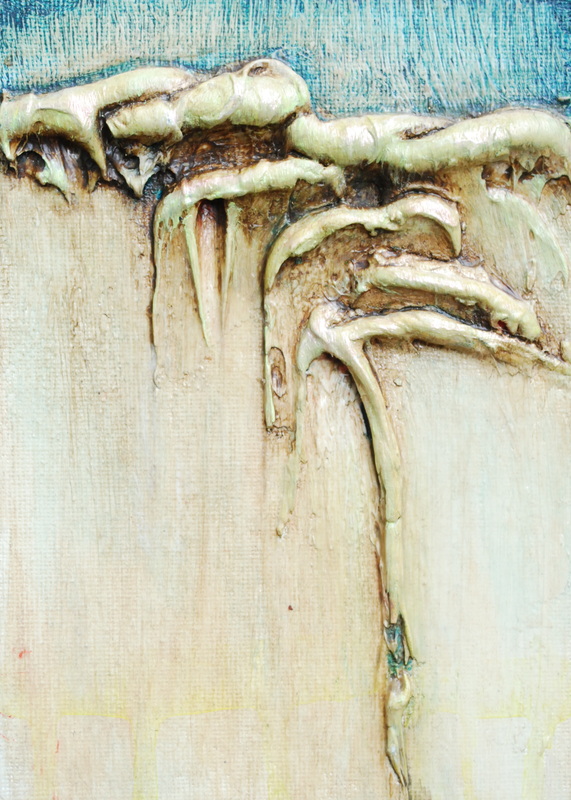|
Every summer in Boulder, CO, artists across the city would open their studios to the community and share their work space with anyone who was interested. My mom and dad would get a catalog and map of participating artists from the local library, and we would spend entire days watching painters create new works (and munching on the endless array of free pretzels and cookies). Many artists created in their homes, but the most exciting stops were huge warehouses with studio space for rent. Here dozens of artists pinned paperworks to the walls or straddled a massive canvass across two easels, each person's space separated with standard gray pop-up tables spattered in color and brushes. I had never seen such a large workspace or such large paintings before, and I wanted to make some too. I still remember certain artists from those studios (which I visited over eight years ago). Even then the pieces that struck me were the color-driven, abstract, atmospheric canvasses set as welcoming arms for a collapsing spirit--the type that when you stand before the work in flat-footed attention, several paces from the canvass, the tip of your nose seems to involuntarily inch towards the paint as if to draw ever-so-near to the energy of color.* My aspirations have always been in huge-scale color-field work, but my "studio space" (random house corner, kitchen floor, desk, spare room, etc.) has limited me to small and mid-scale works. Recently I've been tacking pieces of unstretched canvass on the wall of our apartment (on top of a bunch of tacked-up garbage bags of course) and just going to town on it. These two new works are the next step of my adventure towards making massive works. I love painting in this scale. The frugal woman in me takes over some times and laments the cost of supplies to create these larger works, but my artist "side" is much stronger and always wins out (with a bit of compromise--some of the background colors are from a dumpster full of finger paint). My gestures and lines can be so much more expressive and loose, and I can still crawl into detailed texture and layering without the effect being the focal point; this is an issue I struggled with when working on a small scale with textural elements. In my Siostra Adelphos project the scale of the works were so small that the textures became a focal point, and I enjoy achieving the opposite in the larger pieces I'm creating now. The textural elements are more cohesive to the whole and complement the composition rather than instructing it. Another large painting is on the wall now and will be completed soon. * Footnote: years later in Pittsburgh, when coming face-to-face with my first Motherwell and, fixed on the adjacent wall, my first Clyfford Still, this sensation of magnetism through the work collided with me like a freighter, and in my memory this event occurred with an actual physical shockwave and stumble backward from my eyes treading on such sacred visual ground; this surely is not the case, and in the reality of that moment I believe that I began to cry, and as my family entered the room I was embarrassed by my sudden emotional reaction to the vision of God in these two paintings. I quickly made off with a sarcastic comment and snarky smile at my younger brother, and we continued through the collection. This remains one of the most spiritual experiences in my life.
0 Comments
Leave a Reply. |





